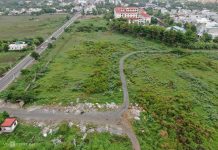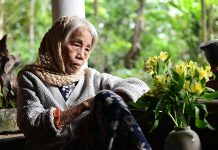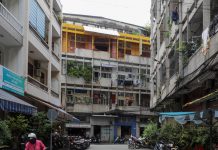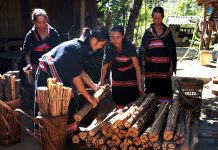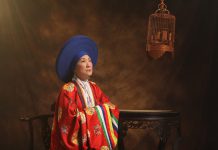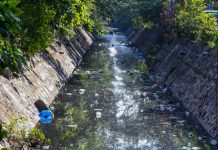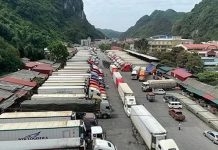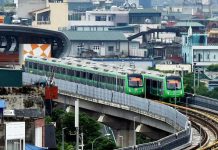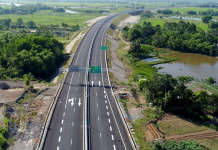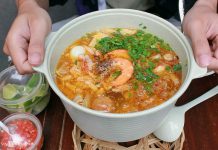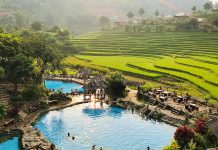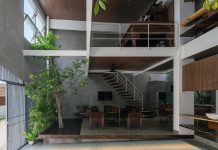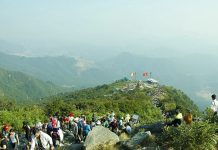Rice fields in Bac Son Valley of Lang Son Province, 160 km north of Hanoi, have donned their yellow-gold harvest cloak.
 |
Farmers in the valley of Lang Son, which borders China, cultivate two rice crops a year that they harvest in July and November.
In late July and early August every year, the ripening paddy fields turn different shades of yellow and green, while wispy white clouds float above, making the panoramic view of the valley a sight to behold.
To see Bac Son Valley at its best, it’s best to hike up the Na Lay Mountain.
 |
A dash of brown is added to the patchwork of yellows and greens because of the different times at which some of the rice is planted and harvested.
 |
The rice harvest season in Bac Son Valley happens sooner than in other localities and lasts about a week, giving visitors a short span in which to enjoy the sight of vast yellow-green fields. A two or three day trip at this time is a sure winner.
Bac Son was once not as well known as other sites like Y Ty in Lao Cai Province or Mu Cang Chai in Yen Bai Province, but photographers and backpackers are flocking here in increasing numbers during the rice harvesting season.
 |
A river meanders through the fields that have limestone outcrops as their background. The area is home to the Tay, Nung and Dao ethnic minority groups who live in small houses next to their rice fields.
 |
In the afternoon, people burn straw to clean up the fields and prepare for the next crop.
 |
Mountains surrounding the Bac Son Valley are good sites for cloud hunting, giving the place an added attraction. From Hanoi, follow National Highway 3 to Thai Nguyen Province, and then 80 km on Highway 1B to reach the place.
On the way to Bac Son Valley early morning, visitors can stop by the Tam Canh mountain pass, about 3 km from Bac Son Town, to enjoy another majestic landscape.
 |
Photographer Bui Vinh Thuan, a native of Bac Son, said the peak of Na Lay Mountain is about 400 m above sea level, and a great place to view the entire Bac Son Valley below.
“When the sun rises behind the mountains and valleys hidden in the clouds, Bac Son looks like a water color painting,” Thuan said.
He advised that visitors wake up as early as 3:30 a.m. to climb 1,200 stone steps in an hour to reach the Na Lay Peak. Climbing the steps after rainy nights is risky because they become slippery, he cautioned. And even in the summer, tourists should carry a thin jacket because it is cold early in the mornings and late in the night.
How to get there
Buses to Lang Son Province leave frequently from the Gia Lam, Nuoc Ngam and Giap Bat bus stations in Hanoi. Ticket prices are in the VND100,000 – 200,000 ($4-9) range. From the Lang Son bus station, one can take a taxi to Bac Son Valley for VND500,000 ($20).
There are trekkers and photographers who drive their motorbikes or cars all the way from Hanoi via the Nhat Tan bridge, Highway 3 and Thai Nguyen Province, turn right at Highway 1B and drive another 75 to 80 km to reach the valley.
Overnight stays
Hostels and homestays are available near the foot of the Na Lay Mountain in Quynh Son Village for VND90,000 – 200,000 ($3-8) per night. To save time going down the mountain, an option is to camp overnight on the mountaintop, for which tents, blankets, flashlights, lighters, food etc. have to be packed.



